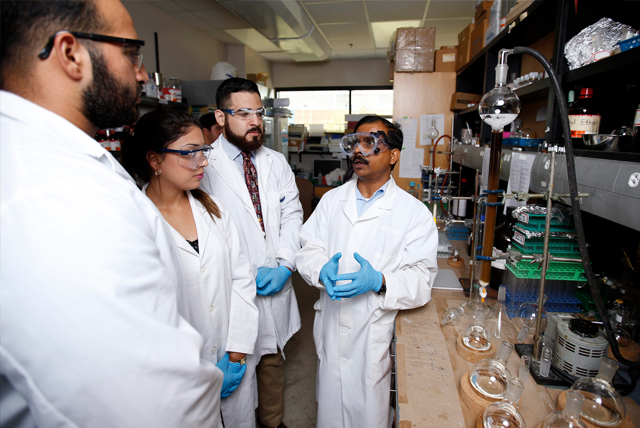Document Type
Article
Publication Date
3-16-2012
Abstract
The estrogen receptor α (ER-α) regulates expression of target genes implicated in development, metabolism, and breast cancer. Calcium-dependent regulation of ER-α is critical for activating gene expression and is controlled by calmodulin (CaM). Here, we present the NMR structures for the two lobes of CaM each bound to a localized region of ER-α (residues 287–305). A model of the complete CaM·ER-α complex was constructed by combining these two structures with additional data. The two lobes of CaM both compete for binding at the same site on ER-α (residues 292, 296, 299, 302, and 303), which explains why full-length CaM binds two molecules of ER-α in a 1:2 complex and stabilizes ER-α dimerization. Exposed glutamate residues in CaM (Glu11, Glu14, Glu84, and Glu87) form salt bridges with key lysine residues in ER-α (Lys299, Lys302, and Lys303), which are likely to prevent ubiquitination at these sites and inhibit degradation of ER-α. Mutants of ER-α at the CaM-binding site (W292A and K299A) weaken binding to CaM, and I298E/K299D disrupts estrogen-induced transcription. CaM facilitates dimerization of ER-α in the absence of estrogen, and stimulation of ER-α by either Ca2+ and/or estrogen may serve to regulate transcription in a combinatorial fashion.
Recommended Citation
Zhang, Y., Li, Z., Sacks, D. B., & Ames, J. B. (2012). Structural Basis for Ca2+-induced Activation and Dimerization of Estrogen Receptor α by Calmodulin. Journal of Biological Chemistry, 287(12), 9336–9344. https://doi.org/10.1074/jbc.M111.334797
First Page
9336
Last Page
9344
Publication Title
Journal of Biological Chemistry
DOI
10.1074/jbc.M111.334797



Comments
© 2012 American Society for Biochemistry and Molecular Biology Inc. Original published version available at http://doi.org/10.1074/jbc.M111.334797